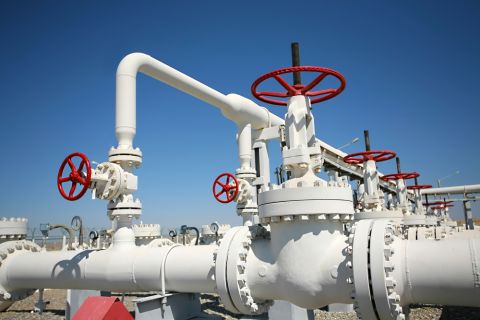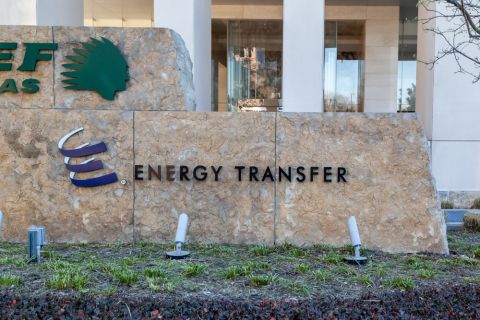
(Source: Hart Energy; Shutterstock.com)
[Editor’s note: Opinions expressed by the author are their own.]
I continue to be surprised by the number of industry participants who report or rely on IP rate data from unconventional oil and gas wells as an indicator of their long-term performance. It’s common to see these values reported as “IP30s”; that is, the average production rate over the first 30 days of production. Often, even shorter initial periods are used, such as “IP24,” which reflects only the first 24 hours of production data.
Typically, these numbers are reported to support an assumed increase in ultimate recovery due to a recent improvement, such as a completion design change. The logic is, if IP rates are twice as high, then long-term recovery will be too; or, if the latest wells are exceeding the type curve during the early life, they’ll continue to do so over their remaining life.
There are several pitfalls in interpreting IP rate data this way and I typically consider IP30s interesting, but low value, information.
IPs Reflect the Operator’s Choke Management Philosophy. Production rates of wells in their initial days of production can be significantly impacted by different choke management philosophies. Chokes can be opened very quickly to generate high initial rates, but some operators may adopt a more conservative approach to avoid wellbore or formation damage that could reduce ultimate recovery. A slowly opened choke would deliver lower initial rates, but those aren’t directly comparable to the cases where the choke is opened faster.
IPs Don’t Reflect Reservoir Performance. Unconventional wells in their early life are in a flow regime where their performance is dominated by near-wellbore effects and fracture conductivity. It typically takes months, if not years, for unconventional wells to transition to “boundary dominated flow,” the flow regime that reveals meaningful information about reservoir performance. Higher initial rates may be the result of a more extensive or more conductive fracture network that merely produces the same reserves faster (referred to as “acceleration”).
IPs Don’t Correlate Well to EUR. We generate type well profiles across all of the unconventional plays in the U.S., and always look at the correlation of EUR to the first one, three, six, and 12 months’ cumulative production. Even when we control for the same lateral length, vintage, and other factors, we almost always see a low correlation of the one and three-month cumulative production to EUR or longer-term cumulatives; R-squared values less than 0.1 are quite common. Even 12-month cumulative production fails to correlate very well with EUR with R-squared values often below 0.3.
Reservoir engineering in unconventional plays is complicated by the reliance on the statistical analysis of analogous wells that take time to reveal their performance in an environment where operators and others need to quickly estimate the impact of changing completion designs and other factors. Unfortunately, however, early time data like IP30 usually doesn't provide enough meaningful information to draw solid conclusions.
About the Author:
Steve Hendrickson is the president of Ralph E. Davis Associates, an Opportune LLP company. Hendrickson has over 30 years of professional leadership experience in the energy industry with a proven track record of adding value through acquisitions, development and operations. In addition, he possesses extensive knowledge of petroleum economics, energy finance, reserves reporting and data management, and has deep expertise in reservoir engineering, production engineering and technical evaluations. Hendrickson is a licensed professional engineer in the state of Texas and holds an M.S. in Finance from the University of Houston and a B.S. in Chemical Engineering from The University of Texas at Austin. He currently serves as a board member of the Society of Petroleum Evaluation Engineers and is a registered FINRA representative.
Recommended Reading
Ozark Gas Transmission’s Pipeline Supply Access Project in Service
2024-04-18 - Black Bear Transmission’s subsidiary Ozark Gas Transmission placed its supply access project in service on April 8, providing increased gas supply reliability for Ozark shippers.
Kinder Morgan Sees Need for Another Permian NatGas Pipeline
2024-04-18 - Negative prices, tight capacity and upcoming demand are driving natural gas leaders at Kinder Morgan to think about more takeaway capacity.
Scathing Court Ruling Hits Energy Transfer’s Louisiana Legal Disputes
2024-04-17 - A recent Energy Transfer filing with FERC may signal a change in strategy, an analyst says.
Balticconnector Gas Pipeline Will be in Commercial Use Again April 22, Gasgrid Says
2024-04-17 - The Balticconnector subsea gas link between Estonia and Finland was damaged in October along with three telecoms cables.
Targa Resources Ups Quarterly Dividend by 50% YoY
2024-04-12 - Targa Resource’s board of directors increased the first-quarter 2024 dividend by 50% compared to the same quarter a year ago.




